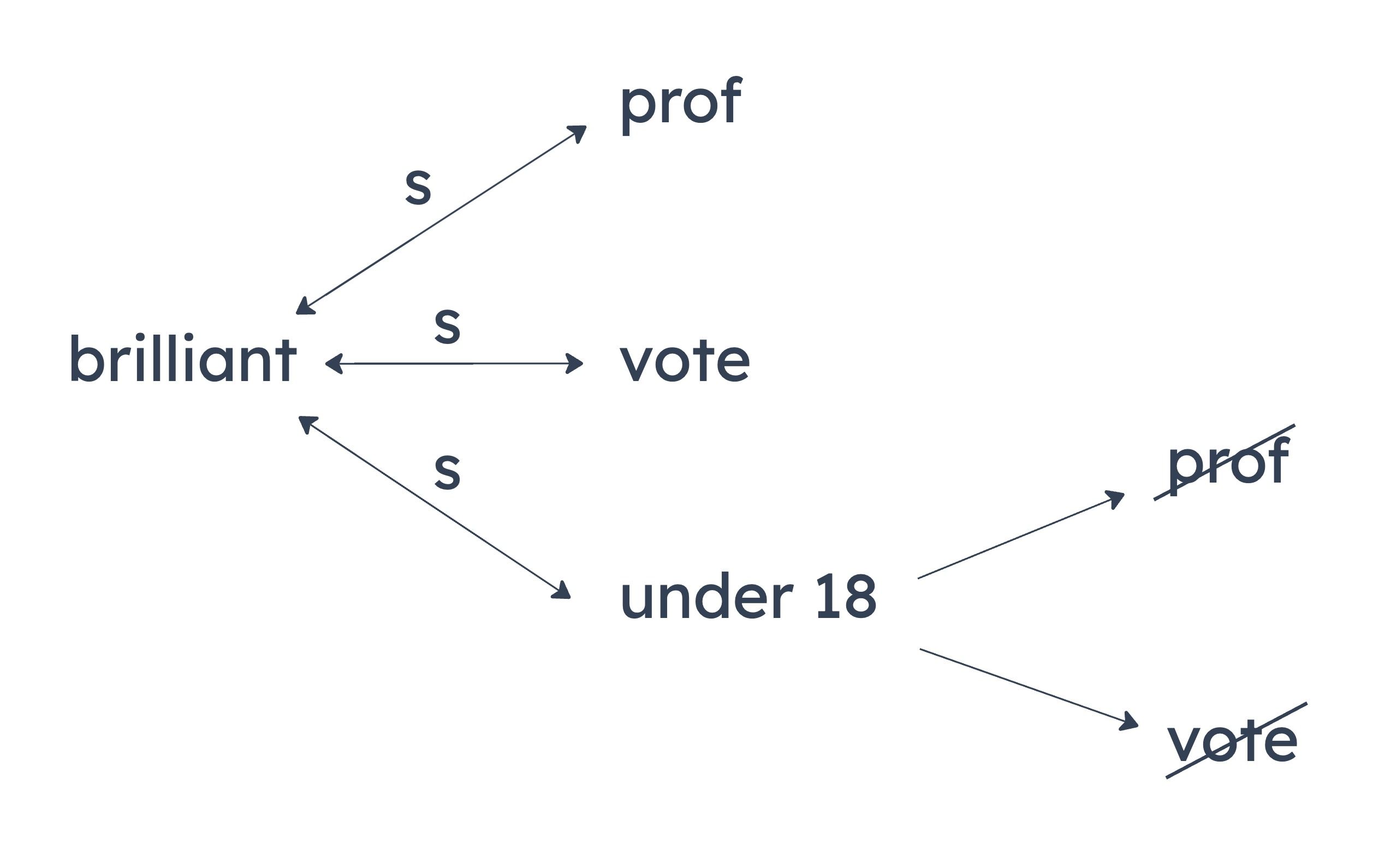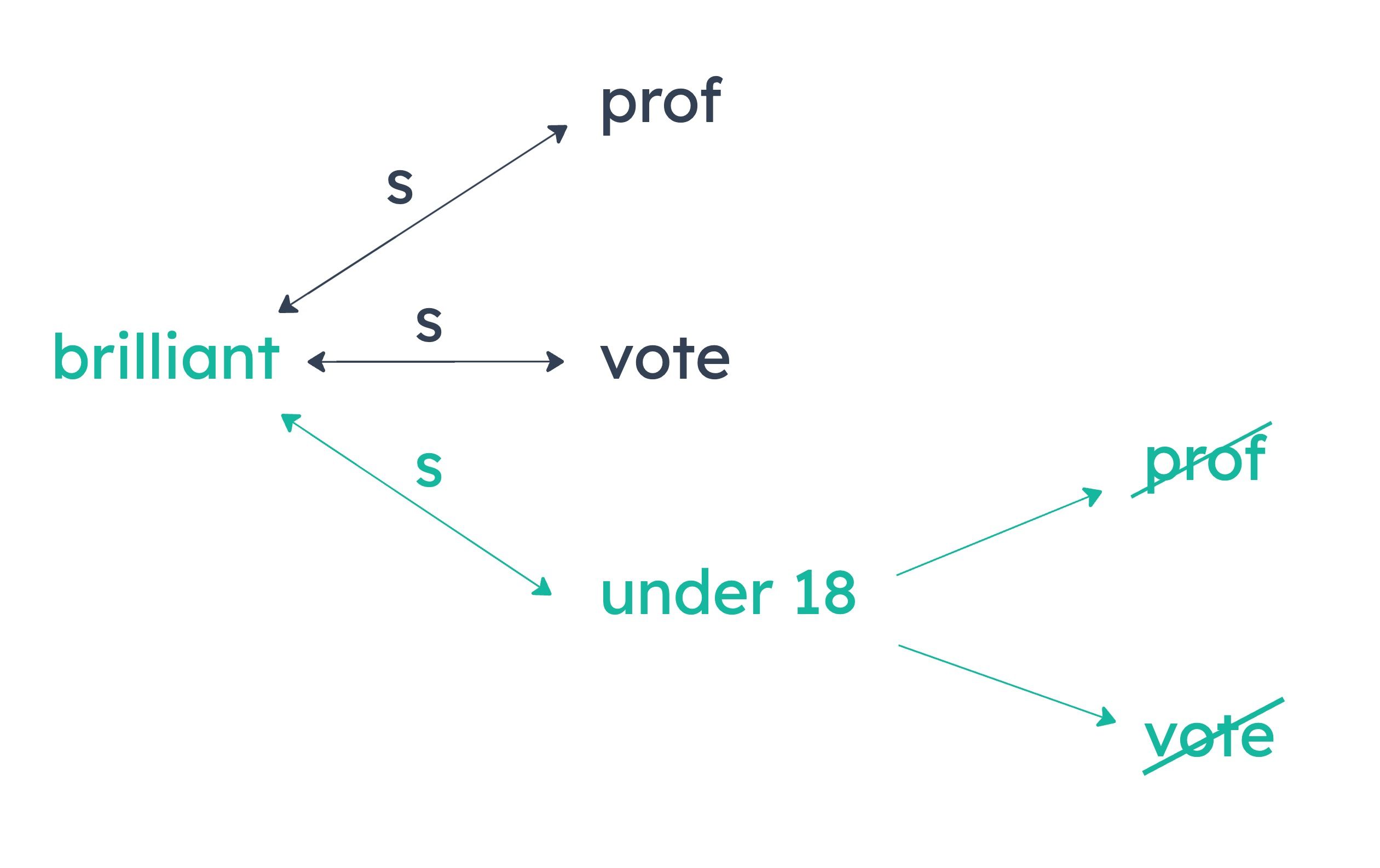Summarize Argument: Counter-Position
The surrealist argues that models do not need to be exclusively taken from outside the psyche; this conclusion is a rejection of the claim made by “many artists” who say that models always need to be taken from outside the psyche. To support his conclusion, the surrealist claims that it is a waste to use art exclusively to represent objects that would already exist without being represented artistically (aka models taken from outside the psyche).
Identify Conclusion
The surrealist concludes by rejecting the mistaken belief of other artists: “Many artists mistakenly think that models need be taken only from outside the psyche.”
A
An artist’s work should not merely represent objects from outside the psyche.
This is the main conclusion. This AC is a rejection of the mistaken belief of many artists; rejecting this mistaken claim is exactly what the surrealist is trying to conclude.
B
Artistic representation is used solely to preserve and reinforce objects.
This answer is not supported by the argument, so we know it is not the conclusion. We are not given an exclusive purpose for artistic representation; in fact, we are told that using artistic representation exclusively to preserve objects that exist externally is a waste.
C
Artists should not base all their work on mere representation.
The conclusion distinguishes between representing models external to and internal to the psyche; the conclusion is not about representation in general. This answer makes a claim about representation in general, so it is not the main conclusion.
D
Great art can confer beauty even upon very vulgar external objects.
The surrealist concedes this point to demonstrate the value in representing models from outside the psyche. However, the surrealist is arguing that artists should not only represent these external objects, so this is not the main conclusion.
E
True works of art rarely represent objects from outside the psyche.
In using “rarely,” this answer makes a claim about the frequency of art. Our argument does not discuss frequency, so this answer is outside the scope of our argument.
Summary
The stimulus can be diagrammed as follows:


Notable Valid Inferences
Some brilliant people are not professors.
Some brilliant people cannot legally vote.
Some brilliant people cannot legally vote.
A
No professors are eighteen-year-olds.
Could be false. Some professors could be eighteen-year-olds. We know that no professors are under eighteen, but this leaves room for the possibility that some professors are exactly eighteen.
B
All brilliant people are either professors, legal voters, or under eighteen.
Could be false. We know that some brilliant people are professors, legal voters, and/or under eighteen. But this may not be an exhaustive list. There could be brilliant people out there who are none of these three things.
C
Some legal voters are not professors.
Could be false. It’s possible that all legal voters are professors. The only things we can say for sure about legal voters are that some of them are brilliant people, and none of them are under eighteen.
D
Some professors are neither legal voters nor brilliant people.
Could be false. It’s possible that all professors are either legal voters or brilliant people, or both. The only things we can say for sure about professors are that at least some of them are brilliant people, and none of them are under eighteen.
E
Some brilliant people are neither professors nor legal voters.
Must be true. Some brilliant people are under eighteen, meaning they are not professors and cannot legally vote.

Summarize Argument
The dean implies his conclusion that the journalism program isn’t “of little or no value to its students.” His evidence is that 65 percent of graduates from the program go on to secure internships or jobs in journalism.
Notable Assumptions
The dean assumes that the 65 percent figure is sufficient to say that the journalism program is of some value to its students. This means he believes that some of those students wouldn’t have otherwise secured journalism internships or jobs.
A
More than half of the school’s students came from jobs in journalism to improve their skills.
At least 51 percent of students had journalism jobs before entering the program. If that’s the case, only a small fraction of the other students got new journalism jobs at the end of the program. Thus, the program isn’t helping students get jobs as much as the dean implies.
B
Some newspaper editors do not regard journalism school as a necessary part of the training of a journalist.
Even if newspaper editors don’t think it’s necessary, it may still be helpful. We don’t know if this truly challenges the dean’s claim that the program is helping its graduates get jobs.
C
The number of cities with more than one major newspaper has declined sharply over the last 25 years.
If anything, this strengthens the dean’s claim. Jobs are scarce, so that 65 percent statistic seems rather excellent.
D
The program offered by the Hyperion School of Journalism is similar in quality and content to those offered by its peer institutions.
We’re not comparing across schools. We’re concerned with whether this particular program was of value to its students.
E
The proportion of applicants to the Hyperion School of Journalism that are admitted is lower than it was ten years ago.
No one ever said the program isn’t competitive. We’re concerned with its value.
Summarize Argument
The sociologist concludes that people who want to be happy shouldn’t own pets. This is because pet-owners are generally less happy than people who don’t have pets.
Notable Assumptions
The sociologist assumes people who own pets weren’t less happy before owning one. This means that she assumes pets don’t positively contribute to happiness, perhaps by providing companionship to otherwise lonely people who are likely to be unhappy.
A
Some people who have pets are happier than most people who do not.
“Some” simply means “more than one.” This doesn’t weaken a general argument about pet ownership.
B
Most people who have no pets occasionally wish that they had pets.
It doesn’t matter what people sometimes wish. We have data saying that pet-owners are, all else equal, less happy that people who don’t own pets.
C
Most people who have pets are reasonably happy.
Even if they’re reasonably happy, they’re not as happy as people who don’t have pets. The conclusion concerns people who want to be “as happy as possible.”
D
Most people who have pets feel happier because they have pets.
Pets generally make people happier. So, people who want to be as happy as possible might actually do well to get a pet. This weakens the sociologist’s argument.
E
All people who have no pets admit to feeling unhappy sometimes.
Even if people who don’t own pets are unhappy sometimes, they’re still happier overall than people who own pets.
Summarize Argument
The author concludes that if North Americans drink more red wine, they can become healthier without cutting their fat intake. This is based on the theory that the reason the French have low rates of heart disease despite a diet high in fat is the amount of red wine the French drink.
Notable Assumptions
The author assumes that red wine consumption is the cause of the French people’s low incidence of heart disease despite a diet high in fat. The author also assumes that there won’t be negative health effects from drinking red wine that would outweigh any benefit from reducing the rate of heart disease.
A
French men consume as much red wine as French women do, yet French men have a higher rate of heart disease than do French women.
French men might eat more fat or do other things that increase heart disease. So, the men’s higher rate of heart disease compared to women doesn’t undermine the theory that red wine consumption helps reduce the rate of heart disease.
B
A greater intake of red wine among North Americans would likely lead to a higher incidence of liver problems and other illnesses.
This points out that an increase in red wine consumption could lead to other health problems that might outweigh the benefit of lower heart disease. Thus, drinking more red wine might not make North Americans healthier.
C
Not all French people have a diet that includes large amounts of fat and a high quantity of red wine.
The author never suggested every person in France has the kind of diet described. On average, the French have a low rate of heart disease, a diet high in fat, and a high quantity of red wine. Some people might have a different diet, but that doesn’t change the overall average.
D
All evidence suggests that the healthiest way to decrease the chance of heart disease is to exercise and keep a diet low in fat.
The author never suggested drinking red wine is the best way to reduce heart disease. Pointing out that there’s a better way to reduce heart disease doesn’t undermine the position that drinking red wine can be one way to reduce heart disease.
E
Many other regions have much lower rates of heart disease than France, though their populations consume even less red wine than do North Americans.
The reason the author cites to France is that they, on average, have a diet high in fat. If other regions have lower rates of heart disease, it could be that they don’t eat as much fat, or do other things to reduce heart disease besides red wine.